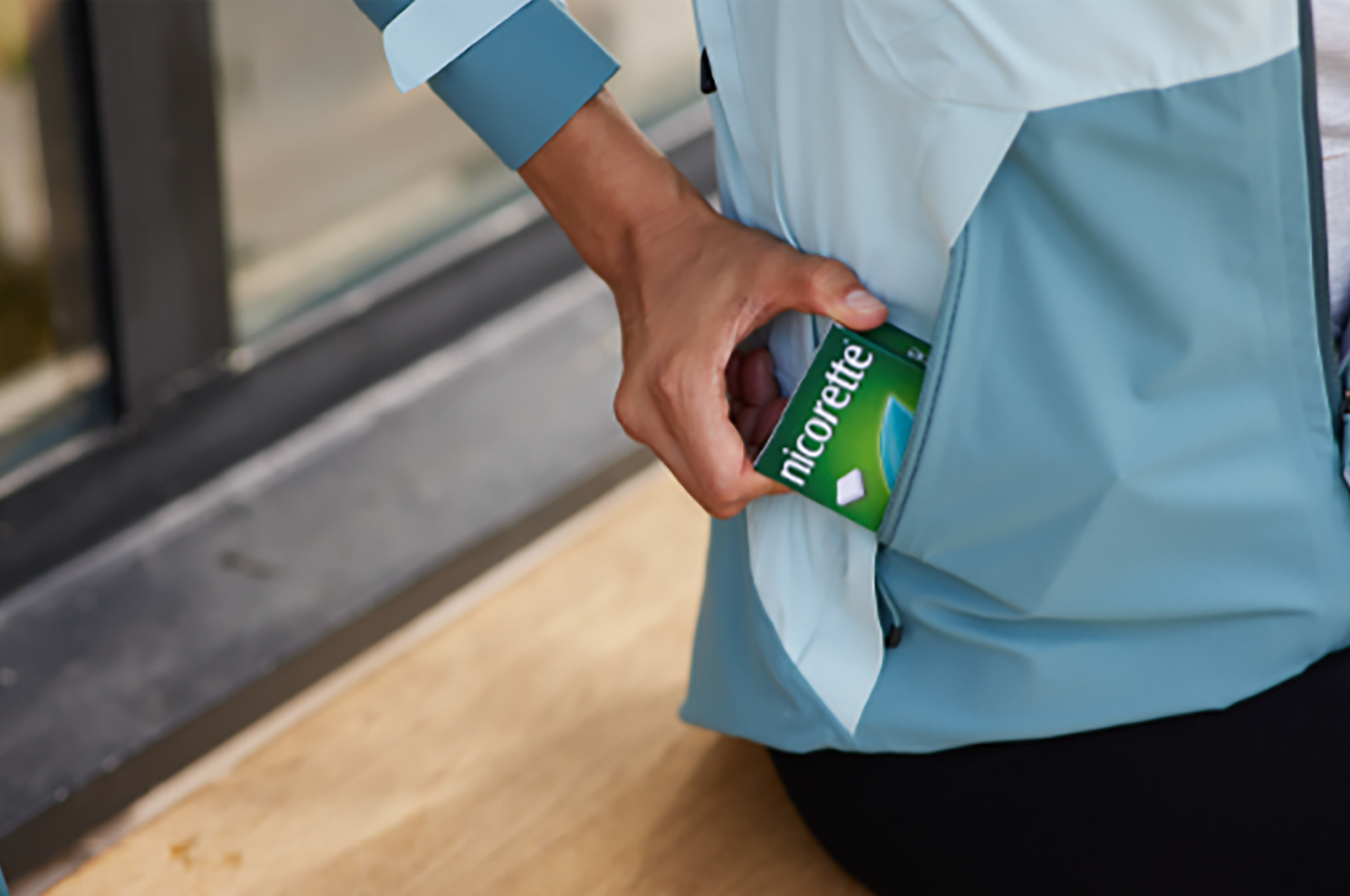This content was created by Xtra’s branded content team alongside Nicorette Canada, separate from Xtra’s editorial staff.
For many in the 2SLGBTQ2IA+ community, Pride is a time for celebration, empowerment, and visibility. But for those trying to quit smoking, this event-filled period can also be fraught with temptations.
“Social settings, like Pride, can be really challenging, especially with the high rate of smoking within the queer community,” says Roger Tam, a Winnipeg-based pharmacist who works at Our Own Health Centre, an 2SLGBTQ2IA+ organization providing addictions and smoking-cessation counselling.
Tam says the rate of smoking among 2SLGBTQ2IA+ individuals ranges from 25 to 45 percent, disproportionately higher than the 10 percent reported among the general Canadian population.
He says the reasons for this include stress due to fear of violence and societal stigmas, and trying to fit in and socialize with other members of the community.
“Smoking—which is a drug—is legal and you can get it at most convenience stores, making it an easy way to deal with some of the stresses that are perhaps more prevalent within our queer community,” Tam says. “As you start coming down, you feel you want more. That is why quitting can be so hard.”
For those who are trying to quit smoking, here is Tam’s advice to help you manage your cravings during Pride.

Practise the four Ds
One technique Tam suggests is the four Ds—delay, drink water, distract and deep breathing. Key to this method is keeping your hands and mouth occupied to delay and distract you from your cravings. This could involve chewing gum, using a fidget spinner or handling a cinnamon stick like a cigarette.
“Take Pride as an example,” Tam says. “Your cravings may be heightened because people around you are smoking, but using these techniques—like chewing food like carrot sticks, or drinking something non-alcoholic, or playing on your phone for a couple minutes—can help ensure that your mind stops thinking about smoking.
“Or simply drinking water. If you slowly sip your water, that will also help because you are taking time to keep your hands and your mouth busy.” And, says Tam, you can also take a few deep breaths, which will help to relax you.
Look for support
Never underestimate how a strong support network can increase your success rate, says Tam. Your family, chosen family or friends can support your efforts to stop smoking by listening and talking to you, or suggesting rewards or treats when you meet certain milestones.
“They could join you in taking up a hobby or exercise. This will keep your mind and body active while distracting you from smoking,” says Tam.
There are also formal resources that you can access for support and advice, including doctors, pharmacists and counsellors, as well as provincially-operated helplines and websites—even health-related booths at Pride events.
Try Nicotine Replacement Therapy
“The reason why smoking is so challenging to quit is actually the nicotine itself,” says Tam.
“Nicotine absorbs into the brain and releases dopamine and other ‘happy’ chemicals, and the result is people wanting more and more,” he says. For those trying to quit smoking, Tam says there are many types of nicotine replacement products available, one is a patch worn on the skin that provides a continuous dose of nicotine throughout the day. The patches come with different nicotine doses, and a pharmacist can help advise which will work best based on how much a person smokes. Over time, a person can switch to patches with less nicotine until they don’t require them anymore.
There are also oral, quick-acting products, like gums, sprays, lozenges and inhalers.

For example, a piece of NICORETTE® Smoking Cessation Gum can be chewed a couple of times before placing it inside the cheek for a minute. This can be repeated for about 30 minutes to release all the nicotine in the gum.
Another option is NICORETTE® QuickMist Nicotine Spray, which is used on the interior of the cheek, where the nicotine will be absorbed into the bloodstream. If the cravings persist, the product can be used again after two minutes. NICORETTE® contains nicotine. For some, using a patch and an oral product is effective, this is known as combination therapy. Always read and follow the label.
Don’t get discouraged
“Quitting is a journey, and it can typically take an individual 30 attempts to quit smoking for good,” says Tam. He warns against feeling discouraged if you have a lapse. Instead, remember quitting smoking is challenging and, no matter what, you should feel pride in what you are doing.
“Every additional step is a step forward. Don’t let these small lapses be a barrier. By slowly moving forward, even with a step back, you can still reach that goal.”
Visit nicorette.ca for more help and tips to manage cravings while on your journey to quit smoking. Always consult your healthcare provider before starting a new product.


 Why you can trust Xtra
Why you can trust Xtra